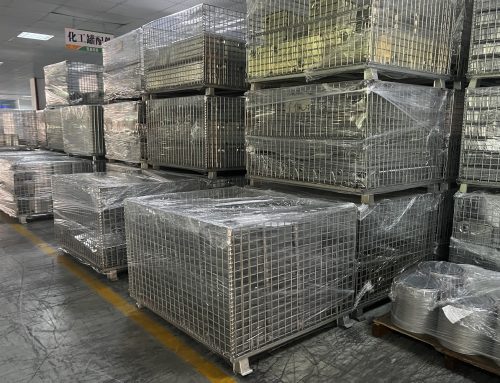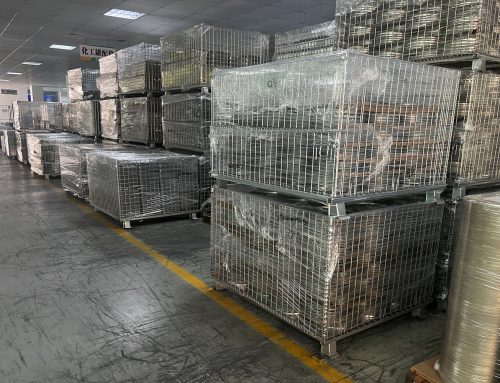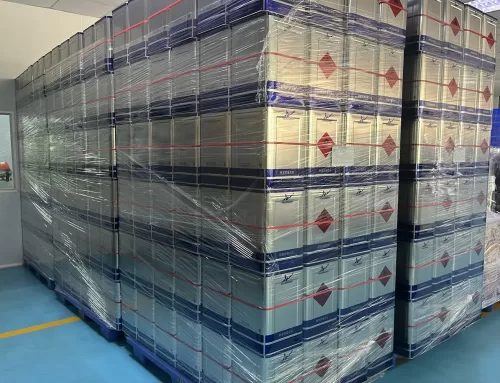(1) Liquid Coating Weld Seam Repair Process
The schematic diagram of the band for liquid coating on weld seams is shown in Figure 3-54, covering the weld seam area. To achieve this, various process methods are employed.
1. Spraying Process: The commonly used method is airless spraying. The working principle of airless spraying involves using a high-pressure pump to draw liquid coating from the coating bucket, pressurizing it to 2-5 MPa. After filtration, the liquid coating circulates in the pipeline, heated to 40-65°C according to the process requirements, enhancing solid content and reducing viscosity. Atomization is achieved by a special-shaped nozzle, producing a fan-shaped spray. The term “airless” implies that the atomization does not require additional air pressure. The oversprayed coating between the two cans is extracted by a suction device. The viscosity of the coating is determined based on the supplier’s requirements or experimental results, typically in the range of 15-30 seconds (No. 4 viscosity cup, volume 100 mL, hole diameter 4 mm). The schematic diagram of airless spraying is shown in Figures 3-56, 3-57, and 3-58. Figure 3-59 demonstrates that with the same liquid coating flow rate, the width and thickness of the repair band vary. Figure 3-60 illustrates that different nozzle models and adjustment parameters, such as viscosity, coating temperature, pressure in the coating pipeline, affect the thickness and width of the liquid coating band.
2. Roller Coating Weld Seam Repair Process: Roller coating methods are divided into inner coating devices and outer coating devices. In this method, liquid coating is applied to the weld seam on the can body using a roller. The inner and outer coating processes are similar. Liquid coating is conveyed from the coating can to the coating box under air pressure. A coating wheel immersed in the coating rotates by an electric motor, carrying the liquid coating on the surface of the coating wheel. When the post-welded can body is conveyed to the repair wheel, the repair wheel applies the liquid coating to the weld seam area, creating a uniform repair band. The amount of coating on the roller can be adjusted and controlled by a scraper (eccentric block) to achieve the desired coating thickness. The speed of the repair wheel is the same as the speed at which the can body passes through. The coating wheel system is installed in a coating box and equipped with a coating liquid level detection device. For the inner coating device, the coating box is mounted on a coating arm connected to the welding arm. The coating viscosity needs to be determined based on the effect, typically in the range of 30-70 seconds (No. 4 viscosity cup, volume 100 mL, hole diameter 4 mm). The schematic diagram of the spray repair box is shown in Figure 3-61, and the inner roller coating process is shown in Figure 3-62.
(2) Parameters Affecting Repair Coating Effect
1. Thickness of the Tinplate and Height of the Lap Joint: These factors determine the coating film thickness and avoid the formation of microholes in the coating (see Figure 3-63).
2. Coating Viscosity: The viscosity determines the coating film thickness and the avoidance of microholes. A higher viscosity results in a thicker coating layer with better protective effects. However, it also increases the difficulty of coating application, making it prone to bubble formation and challenging to cure. The viscosity should be in the range of 15-30 g (No. 4 viscosity cup, volume 100 mL, hole diameter 4 mm) during coating application (see Figure 3-64).
3. Coating Characteristics and Surface Tension Effects: The coating effect is also influenced by the surface tension effects. Surface tension is a tendency of the coating to repel the edges and points of the tinplate weld seam, which may cause the coating layer to be too thin at the weld seam points. Surface tension is a physical phenomenon that is challenging to eliminate but can be controlled. It largely depends on the viscosity change of the coating during the drying and curing process. Adding some additives to the coating can improve this phenomenon (see Figure 3-65).
4. Solvent, Coating Type, and Foaming Form: These factors also influence the coating effect, and the form of foaming is largely determined by the ratio of solvent to coating.
5. Adhesion of the Coating After Repair: Poor adhesion can affect subsequent processes, such as curling and sealing, as the coating layer is prone to damage.
6. Cooling of the Weld Seam After Can Body Welding: The cooling of the weld seam after can body welding also affects the liquid coating layer. If the weld seam area is overheated, the liquid coating layer may flow, causing the central area of the weld seam to become thinner and affecting the repair effect.
High-quality coatings should possess the following conditions and characteristics:
The coating should not chemically react with the contents of the container.
After repair coating and curing, the coating should have good mechanical stability, flexibility, hardness, and adhesion.
After repair coating and curing, the molecular density of the coating should be high, and the molecules should not undergo chemical changes due to certain conditions (such as high-temperature sterilization). The polymerization reaction (curing) temperature should be relatively low.
The following parameters also affect the repair coating:
Solid content of the liquid coating
Temperature sensitivity of the coating
Mass per unit area of the coating layer
Distribution of the coating layer due to surface tension
Visual effects after curing
There are many types of liquid coatings, and commonly used types include:
Organic solvent-based
Epoxy resin-based
Ethylene-based coatings
Acrylic coatings
Phenolic resin-based coatings





